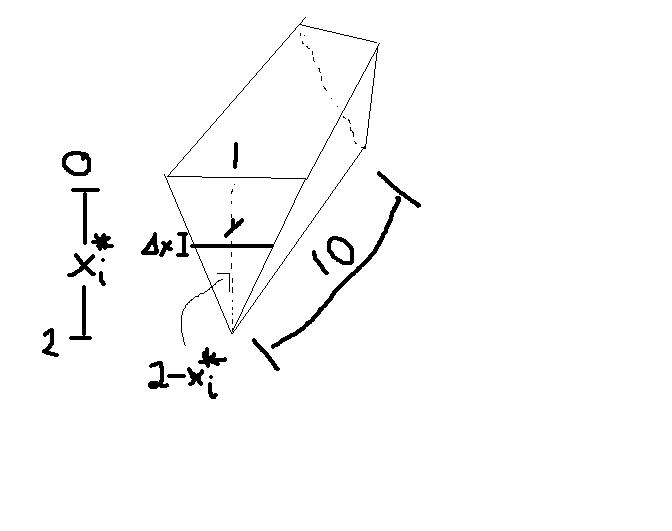Science:Math Exam Resources/Courses/MATH101/April 2009/Question 07 (b)
{{#incat:MER QGQ flag|{{#incat:MER QGH flag|{{#incat:MER QGS flag|}}}}}}
• Q1 (a) • Q1 (b) • Q1 (c) • Q1 (d) • Q1 (e) • Q1 (f) • Q1 (g) • Q1 (h) • Q1 (i) • Q1 (j) • Q2 • Q3 (a) • Q3 (b) • Q4 (a) • Q4 (b) • Q5 • Q6 (a) • Q6 (b) • Q7 (a) • Q7 (b) • Q7 (c) • Q8 (a) • Q8 (b) •
Question 07 (b) |
|---|
|
An open metal tank has two ends which are isosceles triangles with vertex at the bottom, two sides which are rectangular, and an open top. The tank is 1 metre wide, 2 metres deep, 10 metres long and full of water (density = 1000 kg/m3).
|
|
Make sure you understand the problem fully: What is the question asking you to do? Are there specific conditions or constraints that you should take note of? How will you know if your answer is correct from your work only? Can you rephrase the question in your own words in a way that makes sense to you? |
|
If you are stuck, check the hints below. Read the first one and consider it for a while. Does it give you a new idea on how to approach the problem? If so, try it! If after a while you are still stuck, go for the next hint. |
Hint 1 |
|---|
|
Try drawing a picture first (in the solution, we will set the origin to be the top most point). |
Hint 2 |
|---|
|
Use similar triangles to find the width y of a small rectangular prism at height . |
Hint 3 |
|---|
|
The following formulas will probably be useful Volume = length x width x height Mass = volume x density Force = acceleration x mass = gravity x mass = 9.8 x mass Work = force x displacement |
|
Checking a solution serves two purposes: helping you if, after having used all the hints, you still are stuck on the problem; or if you have solved the problem and would like to check your work.
|
Solution |
|---|
|
A picture is included at the bottom of the page. Let be a sample point. First, we use similar triangles as in the diagram to see that
Isolating yields that
Now we use hint 3 and write down the necessary formulas. For volume of the ith piece, we have
For the mass of the ith piece, where , we have
For the force, where , we have
For the work on the ith piece, we have
and so the total work done is
completing the question. |
{{#incat:MER CT flag||
}}











